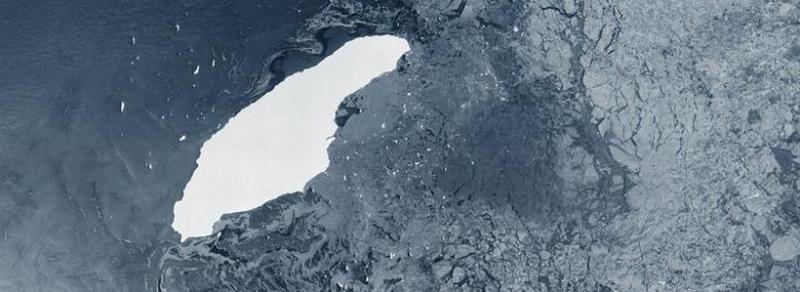 Antarctica’s iceberg A68 has broken up into a myriad of small pieces so that the US National Ice Center says are no longer worth tracking. Once the world’s biggest iceberg in existence, A68 became an unexpected social media star in its own right. A brief look back at the journey of this remarkable berg.
Antarctica’s iceberg A68 has broken up into a myriad of small pieces so that the US National Ice Center says are no longer worth tracking. Once the world’s biggest iceberg in existence, A68 became an unexpected social media star in its own right. A brief look back at the journey of this remarkable berg.
In January of 2017, we posted about a massive crack that had formed in the Larsen ice shelf, a vast Antarctic ice shelf in the northwest part of the Weddell Sea on the east coast of the Antarctic Peninsula. Specifically, the crack formed in the area of the ice shelf designated as Larsen C. Larsen A, the smallest of the three ice shelves, broke apart in January 1995. Larsen B partially collapsed in 2002, calving an ice sheet the size of Rhode Island. Recent studies suggest that Larsen B will disintegrate by the end of the decade.
In early November 2017, the Larsen C shelf crack, which had continued to spread, finally calved and became the world’s largest iceberg. The berg was massive, with a surface area of 2,200 square miles, almost the size of Delaware, and containing roughly a trillion tons of water, or more water than Lake Erie.
And then, nothing much happened. The iceberg almost immediately ran aground and stayed put for several years.
Then, in July of 2020, the berg, now named A68a, broke free and began to drift. By November, it was drifting straight toward the British Overseas Territory of South Georgia. The massive berg was roughly the same length as South Georgia island itself. There was a strong possibility that the berg could ground and anchor itself offshore of the wildlife haven. If that happens, it was feared that it would pose a grave threat to local penguins and seals on the island.
For a time, A68’s voyage went viral. BBC reports that people around the world shared satellite pictures online, especially as the frozen block neared South Georgia.
“A68 caught the attention of a lot of different people,” commented Laura Gerrish, a mapping specialist with the British Antarctic Survey (BAS). “We saw every little twist and turn. We were able to follow its progress with daily satellite images, at a level of detail we’ve not really been able to do before.”
By a fortuitous mix of wind and current, the iceberg missed South Georgia and drifted north. By December, warmer waters and the weather were causing A68 to break up into smaller icebergs. The process has continued and now the US National Ice Center is no longer tracking the bergie bits.
So, iceberg A68 is gone. It was the 4th largest iceberg in recorded history and the first social media star.
Thanks to David Rye for contributing to this post.
